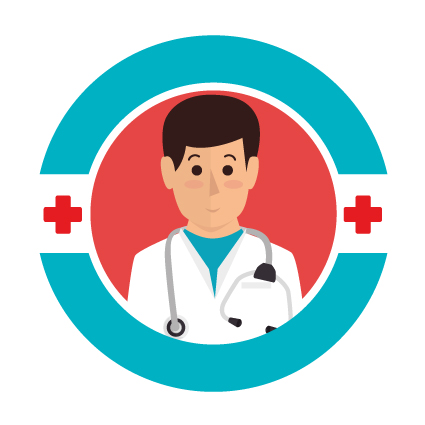
Switching to telemedicine for routine asthma visits in the early months of the COVID-19 pandemic was linked with positive disease control and an increase in appointment “show rates” among Los Angeles inner city children, a researcher reported.
Delivery of routine asthma care via telemedicine did not appear to negatively impact asthma control among the children in the study, as measured by childhood asthma control testing (ACT), according to Kenny Kwong, MD, of the University of Southern California (USC) Medical Center in Los Angeles.
The analysis also revealed that the appointment show-rate increased significantly after switching to telephone contact. Between March and June 2019, in-person show rates averaged between 70% and 80% versus 90% to 95% between March and June 2020 for telemedicine show-rates, he reported in a presentation at the American College of Allergy, Asthma & Immunology virtual meeting.
In addition, the time healthcare providers spent with patients increased during appointments conducted via telephone by as much as 62% versus pre-pandemic in-person visits.
“We found that asthma control could be maintained, and show rates actually increased, using telephone visits during a natural crisis such as COVID-19, which shut down face-to-face visits,” Kwong said.
He also noted that a survey of staffers revealed that most experienced higher workloads associated with the switch. However, it was not clear if this was because the staffers were working with a novel platform that took some getting used to, or whether telemedicine visits actually entail more organization and work on the part of the staff, Kwong explained.
The study’s primary outcome was asthma control based on ACT during the time face-to-face visits were still occurring compared with telemedicine visits post-pandemic. Secondary outcomes included face-to-face appointment show-rates versus telemedicine show-rates and staff workload perceptions during both time points.
Since 1994, Los Angeles County and the USC Medical Center (LAC+USC Medical Center) have operated mobile asthma management units designed to serve inner city populations. Three of the mobile units regularly visited roughly 20 schools each prior to the COVID-19 pandemic, with pediatric patients seen about every 2 months.
Each of the mobile units served as a subspecialty clinic, with personnel able to perform spirometry and other testing, as well as prescribe controller and other medications.
“This system has worked very well. We have been able to treat many asthmatic children until the debacle of COVID-19,” Kwong commented. After the Los Angeles Unified School District closed with little warning in mid-March, “all our face-to-face visits on the mobile asthma units came to a grinding halt, and we…had to switch almost overnight to telephone visits,” he explained.
Kwong noted that telemedicine visits are now done via Zoom and other video platforms, but the data in the current study was derived from telephone-delivered appointments only.
“I wouldn’t call it a silver lining of COVID-19; more like a dirty brown dark lining,” Kwong said. “But [the switch] presented the opportunity to see if in an inner city population involving patients who traditionally are not able to have access to telehealth… whether these patients could actually be served using telemedicine techniques.”
The researchers found no significant difference in the number of patients with ACT asthma control scores of ≥20 — indicative of well-controlled asthma — before and after the switch to telephone appointments.
Among 12 staffers who completed the survey, none reported receiving overtime pay with the switch to telemedicine, but most (n=10) reported an increased workload associated with the switch. All but one staffer reported spending more time per patient versus in-person visits.
Kwong said the findings suggest a telehealth model may be useful for other chronic diseases in children, “especially during periods of emergency and natural crisis when face to face visits essentially shut down without notice.”
Study co-author Lyne Scott, MD, of the LAC+USC Medical Center, said in a press statement that “it is reassuring and encouraging that the quality of care in young patients, including those in underserved populations, received via virtual access, kept their asthma under control. This study shows it is possible to move towards new models of treatment that increase access and convenience for the patient, and still maintain quality of care.”
Disclosures
Kwong disclosed relevant relationships with Thermo Fisher Scientific.
Related Post
 16
16 Sep
The Role of Lifestyle in Anti-Aging Skin Care Products
Looking for anti aging skin care products can feel like a hit-or-miss insight. With so many options, it can be hard to choose. These dermatologist tips can assist you with shopping with certainty. Has your skin been harmed or has it matured altogether.
Read More 14
14 Aug
7 Essential Healthy Habits to Instill in Your Kids in 2024
In the high-speed universe of 2024, raising solid and balanced kids requires a blend of shrewd nurturing and adjusting to the most recent patterns. As guardians, it's critical to instill propensities that cultivate both physical and mental prosperity in our.
Read More 29
29 Jul
Which Symptom Indicates That Someone May Need Mental Health Treatment?
Today! In this article!, you can find the best treatment for mental health. Which symptom indicates that someone may need mental health treatment? Perceive the indications of requiring emotional well-being treatment and assume responsibility for your prosperity. Try not to hold.
Read More 08
08 Jul
What Is Self-Management of Chronic Disease?
Diabetes, joint inflammation, hypertension, lung illness, corpulence and other persistent sicknesses can make life challenging to oversee for a great many more seasoned grown-ups, frequently compelling them to surrender their freedom. The Challenges of Chronic Disease More established grown-ups are lopsidedly impacted.
Read More